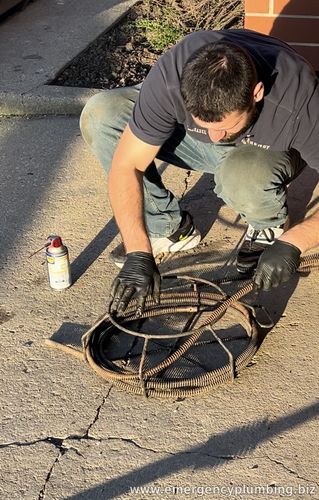Key Types of Sewer Drain Cables and Their Uses |
A Comprehensive Guide to Sewer Drain Cable Types and Recommended Sizes for Effective Plumbing Maintenance
Are you a plumbing professional or a DIY enthusiast tackling common drain clogging issues?
Understanding the right type of sewer drain cable and the optimal size for different plumbing tasks can significantly enhance your efficiency and results. This guide will walk you through the various sewer cable types and the recommended sizes for various drain types, including bathtubs, showers, and floor drains.
Key Types of Sewer Drain Cables and Their Uses
Sewer drain cables, commonly known as drain snakes, are crucial tools for clearing clogs in plumbing systems. These cables are designed to navigate through the twists and turns of drain pipes, effectively breaking up or retrieving obstructions. 1. Bathtub Drains - Typical Size of Drain: 1-1/2 inches to 2 inches - Recommended Cable Size : 1/4 inch or 5/16 inch For bathtub drains, which typically measure between 1-1/2 inches and 2 inches in diameter, a smaller cable size is ideal. A 1/4 inch or 5/16 inch cable is flexible enough to maneuver through the relatively narrow and often curved piping found in bathtub drainage systems. These sizes are perfect for dislodging minor blockages caused by hair and soap buildup.
2. Shower Drains - Typical Size of Drain : 2 inches to 3 inches - Recommended Cable Sizes : 5/16 inch, 3/8 inch, or 13/32 inch. Shower drains are slightly larger and can accommodate a thicker cable. Options ranging from 5/16 inch to 13/32 inch are effective for tackling common clogs in shower drains, such as those caused by hair and small debris. The extra thickness of these cables provides a robust mechanism for clearing blockages while still being flexible enough to navigate through standard shower plumbing.
3. Floor Drains - Typical Size of Drain : 3 inches or more - Recommended Cable Size : 3/8 inch or larger . Floor drains, which are often found in basements and utility areas, are typically larger and require a more substantial cable. A 3/8 inch or larger cable is recommended for these drains to effectively handle larger and more stubborn blockages. These heavier cables can push through tougher obstructions without coiling or kinking within the wider piping.
Choosing the Right Sewer Drain Cable .
Selecting the correct sewer drain cable not only depends on the size of the drain but also on the nature of the clog. Here are a few tips for choosing the right cable for your needs: - Flexibility : Smaller cables are more flexible and easier to maneuver in tight spaces - Strength : Thicker cables provide more strength and are better suited for heavy-duty clogging issues. - Compatibility : Ensure the cable is compatible with your drain cleaning machine or hand snake. By understanding the various types of sewer drain cables and their recommended sizes, you can more effectively address common plumbing issues, saving time and preventing further damage to your pipes.
Whether you're a professional plumber or a homeowner looking to maintain your plumbing system, choosing the right size and type of sewer drain cable is crucial. This guide provides you with the necessary information to make informed decisions about which cable to use for different types of drains, ensuring effective and efficient clog removal. For more detailed guides and professional advice on maintaining your plumbing system, keep visiting our site. We are dedicated to providing you with up-to-date, reliable, and easy-to-understand plumbing solutions.
When you need professional drain cleaning or hydro jetting, think of Emergency Plumbing of Highland Park. Equipped with state-of-the-art modern tools and backed by extensive expertise, we're ready to make your drains flowing smoothly again. Call us today, No delay !
|


Comments
Post a Comment